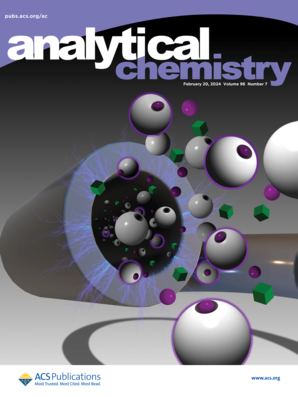Near-Infrared Mobile Cloud OA-ICOS Sensor System for Atmospheric Carbon Dioxide Monitoring
IF 6.7
1区 化学
Q1 CHEMISTRY, ANALYTICAL
引用次数: 0
Abstract
Based on near-infrared off-axis integrated cavity output spectroscopy (OA-ICOS), a portable carbon dioxide (CO2) sensor system capable of atmosphere monitoring is proposed by targeting the CO2 absorption lines at 2.004 μm. To address the comprehensive issues of complex light-adjustment structures, poor sealing, and slow gas replacement, an effective optimization scheme is introduced, combining fluid dynamics to produce a stable optical resonant cavity with an optical path length of 891 m and a physical length of 30 cm. The sensor system boasts a wide dynamic range of 0.011–800 parts per million (ppm), with a limit of detection (LoD) of 11 parts per billion (ppb) at an averaging time of 0.5 s. To address the issues of long monitoring time and cumbersome data supervision, a cloud monitoring system was developed based on a master control module, a cloud server, and a portable monitoring terminal. Field mobile monitoring of urban CO2 was conducted over a large area in Changchun city, along with a 7-day fixed-point detection on the campus of Jilin University, verifying the reliability and application potential of the mobile CO2 monitoring system in field applications.

求助全文
约1分钟内获得全文
求助全文
来源期刊

Analytical Chemistry
化学-分析化学
CiteScore
12.10
自引率
12.20%
发文量
1949
审稿时长
1.4 months
期刊介绍:
Analytical Chemistry, a peer-reviewed research journal, focuses on disseminating new and original knowledge across all branches of analytical chemistry. Fundamental articles may explore general principles of chemical measurement science and need not directly address existing or potential analytical methodology. They can be entirely theoretical or report experimental results. Contributions may cover various phases of analytical operations, including sampling, bioanalysis, electrochemistry, mass spectrometry, microscale and nanoscale systems, environmental analysis, separations, spectroscopy, chemical reactions and selectivity, instrumentation, imaging, surface analysis, and data processing. Papers discussing known analytical methods should present a significant, original application of the method, a notable improvement, or results on an important analyte.
 求助内容:
求助内容: 应助结果提醒方式:
应助结果提醒方式:


